Will elevation in boiling point temperature be same for 0.1M NaCI and 0.1M sucrose solution ?
no, it will not be the same because collingative property does not depend upon molar concentration alone but also upon the number of particles (ions) in solution. Solution chloeide (NaCI) is an ionic solid and will form more number of particoes (ions) in solution than sucrose (C12H22O11) which is a molecular solid. Thus, the elevation in boiling for 0.1 M NaCI solution will be more.
Similar Questions
Which of the following statements is applicable for 0.1M urea solution and 0.1M sucrose solution?
View SolutionFigure explains elevation in boiling point when a non-volatile solute is added to a solvent. Variation of vapour pressure with temperaure and elevation in boiling point is marked.
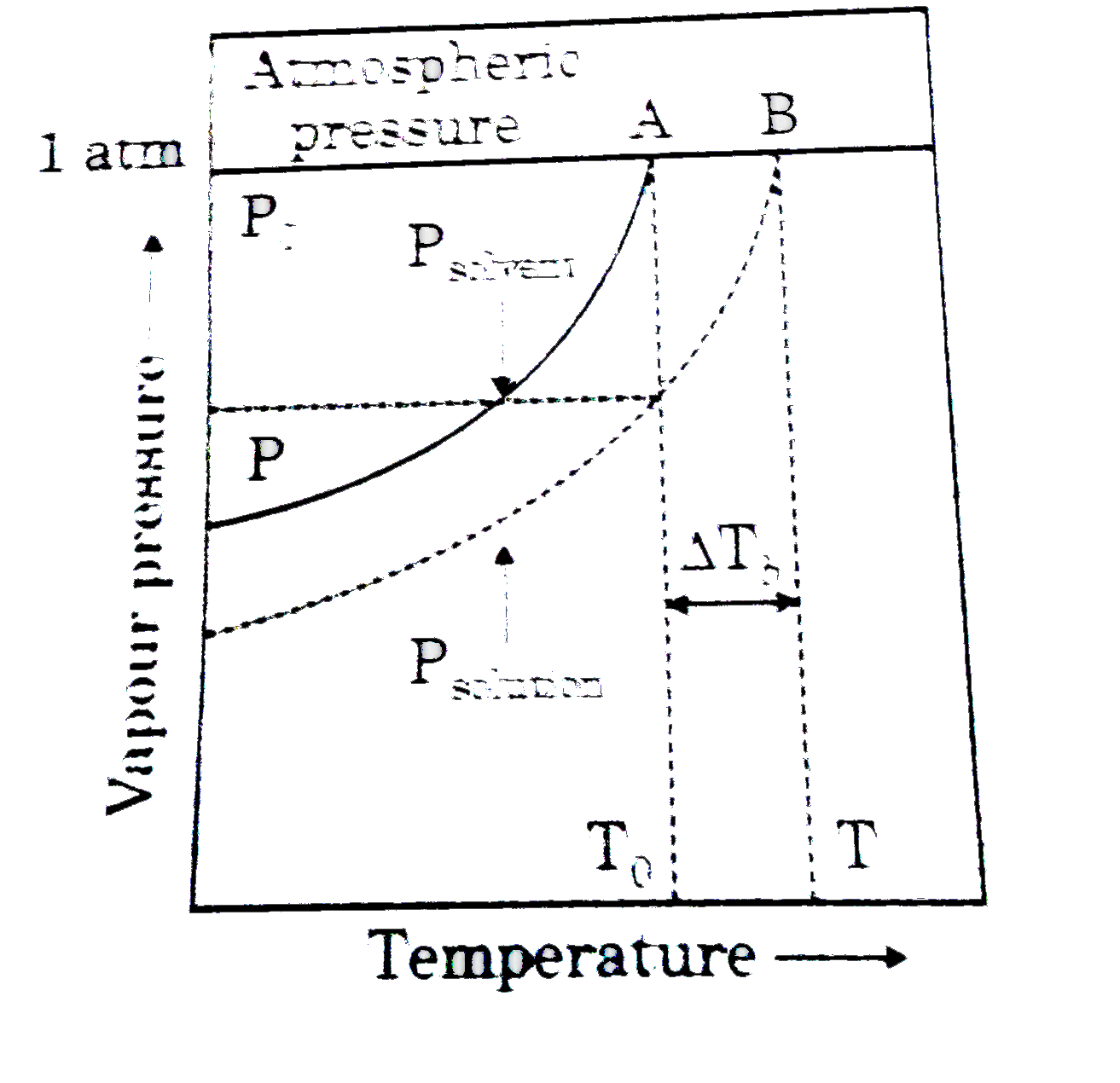
Given that ΔTb is the elevation in boiling point of the solvent in a solution of molarity m then limm→0(ΔTbm) is equal to:
View Solution
Knowledge Check
Figure explains elevation in boiling point when a non-volatile solute is added to a solvent. Variation of vapour pressure with temperaure and elevation in boiling point is marked.
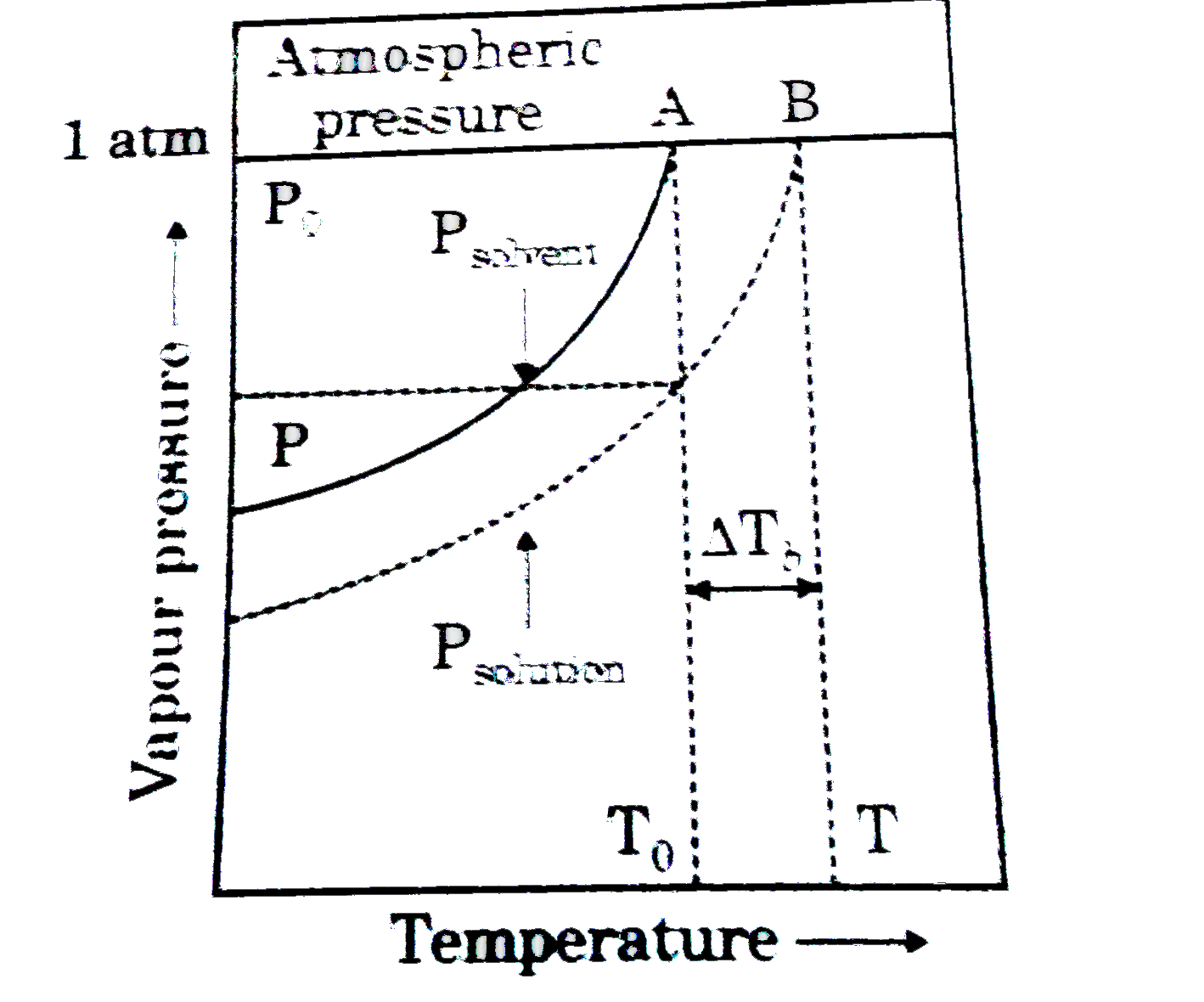
Elevation in b.p of an aqueous urea solution is 0.52∘(Kb=0.52∘mol−1kg). Hence, mole fraction of urea in this solution is:A0.982B0.0567C0.943D0.018An aqueous solution of 0.01 M KCl cause the same elevation in boiling point as an aqueous solution of urea. The concetration of urea solution is :
A0.01 mB0.005 MC0.02 MD0.04 MThe osmotic pressure of 0.1 M glucose and 0.1 M sucrose solution are the same because
ABoth are carbohydratesBThese are different compounds having different molecular weightsCBoth are present in the same concentrationDGlucose is reducing sugar while sucrose is non-reducing sugar
Consider following figure and answer the questions at the end of it.
Figure explains elevation in boiling point when a non-volatile solute is added to a solvent.
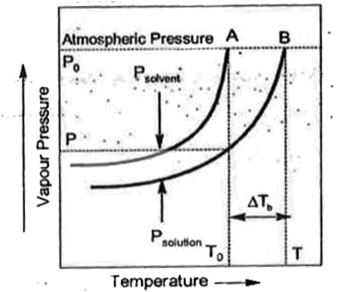
Variation of vapour pressure with temperature and showing elevation in boiling point.
Given that ΔTb is the elevation in boiling point of the solvent in a solution of molality 'm' then Ltm→0(DηlTbm) is equal to
View SolutionConsider following figure and answer the questions at the end of it. Figure explains elevation in boiling point when a non-volatile solute is added to a solvent.
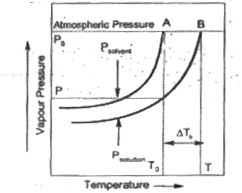
Variation of vapour pressure with temperature and showing elevation in boiling point.
Given that ΔTb is the elevation in boiling point of the solvent in a solution of molality m then Ltm→0(ΔTbm) is equal to
View SolutionConsider following figure and answer the questions at the end of it. Figure explains elevation in boiling point when a non-volatile solute is added to a solvent.
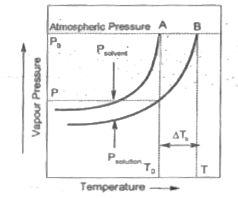
Variation of vapour pressure with temperature and showing elevation in boiling point.
A complex of iron and cyanide ions is 100% ionized at 1m (molal). If elevation in boiling point is 2.08∘(Kb=0.52∘mol−1kg) then the complex is:
View SolutionConsider following figure and answer the questions at the end of it.
Figure explains elevation in boiling point when a non-volatile solute is added to a solvent.
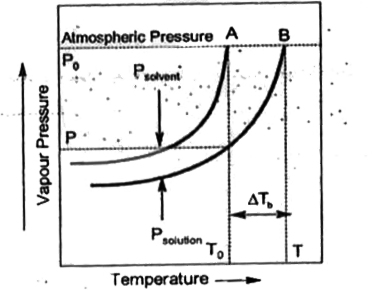
Variation of vapour pressure with temperature and showing elevation in boiling point.
A complex of iron and cyanide ions is 100% ionized at 1m (molal). If its elevation in boiling point is 2.08∘(Kb=0.52∘mol−1kg) then the complex is
View SolutionRelative decrease in vapour pressure of an aqueous glucose dilute solution is found to be 0.018. Hence, elevation in boiling point is : (It is given that 1 molal aqueous urea solution boils at 100.54∘C at 1 atm pressure)
View Solution
